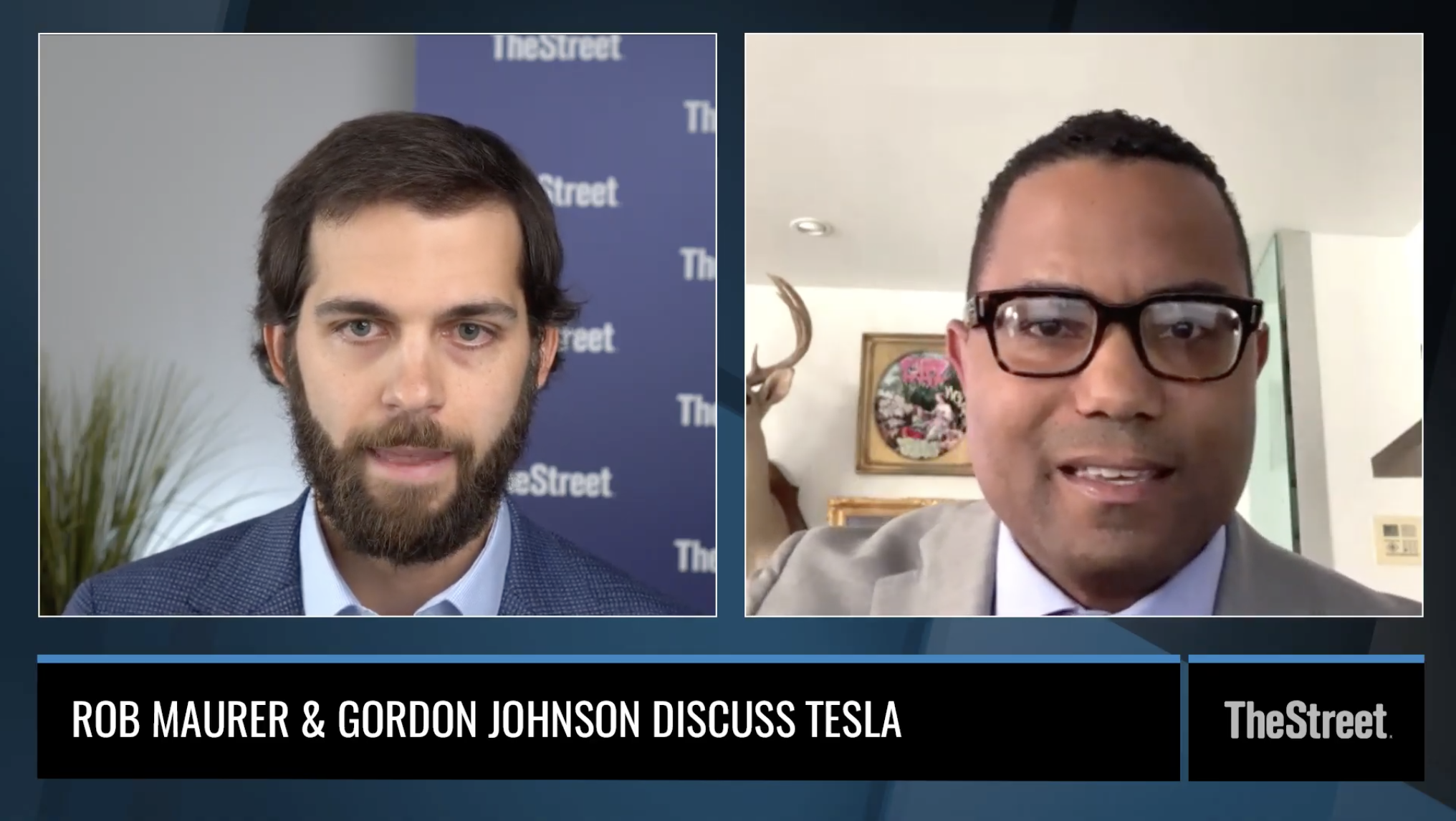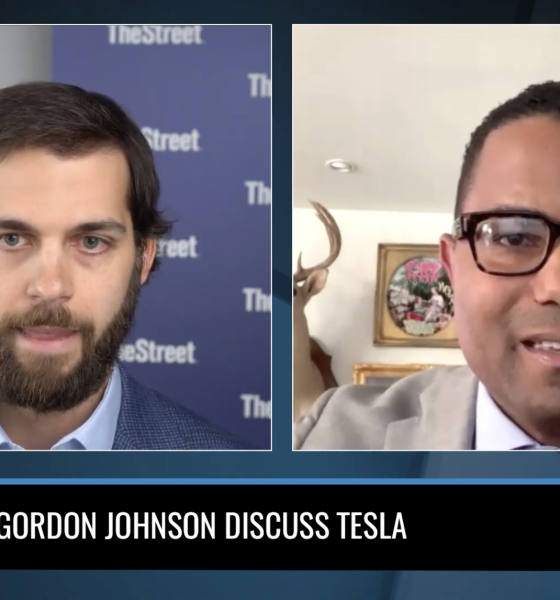Tesla bear Gordon Johnson appeared on a live debate with Tesla Daily’s Rob Maurer on September 3rd. Johnson is a notable skeptic of Tesla and its electric vehicles and holds a $19 price target for the company’s stock. Arguably the most controversial of Johnson’s points during the debate was that Tesla does not have a technological advantage in terms of its batteries, and its range ratings are misleading.
The point Johnson made came from the thought that Tesla’s batteries, which are manufactured by Panasonic, LG Chem, and CATL, are obtainable by any automaker. Interestingly, Maurer countered with the point that if the cells were available for any other automaker, how were other car companies not able to match Tesla’s technological advantage in terms of EV range.
Johnson’s rebuttal was simple: Tesla’s advantage does not exist.
“There’s been a number of articles, one of which was written in the Washington Post, that suggests if you actually go out and test their cars, their range is far less than what they say,” Johnson said.
Tesla has held the reputation of having significantly more range than any other electric car that is currently available on the market. The Model S currently holds the highest EPA-estimated range rating for an electric vehicle with 402 miles. With over a million Tesla vehicles sold, it would be difficult to imagine that the company is fabricating its range ratings as an excuse to sell more cars.
While other automakers, like Lucid, have been given EPA ratings that are far greater than the Model S rating of 402 miles, those cars are not available on the market yet. The Lucid Air was given a 517-mile rating recently, but the company has not unveiled the vehicle yet. The Air will be revealed during an online event on September 9th.
“When you go out and actually test the cars versus what they [Tesla] state, the mileage isn’t what it seems,” Johnson added.
While EPA rated vehicle mileage is subjected to certain conditions and is not identical to real-world driving, it is relatively accurate in terms of how many miles an owner would get per charge. When being assessed, the EPA requires a vehicle to travel at different speeds while utilizing features, like air conditioning, that could reduce range during operation.
However, real-world owners have proven that Tesla vehicles do maintain and sometimes exceed the range ratings they were given. A test from Model S owner Sean Mitchell showed that the Performance variant of Tesla’s flagship sedan achieved greater range than expected.
Tesla has also put a substantial focus on its cars, having a sufficient range rating. Recently, Elon Musk announced that the company was scrapping plans for a Standard Range configuration of the Model Y because its range would be below 250 miles. “Range would be unacceptably low (< 250 mile EPA),” Musk detailed.
Tesla’s technology lead is not only evident through its vehicles’ performance, but government-regulated entities like the EPA have also proven it. The company has held a sizeable lead in terms of EV tech and continues to maintain a considerable advantage in terms of the technological developments of its cars. This has been admitted to by numerous CEOs of other car companies.
Rob Maurer‘s debate with Gordon Johnson is available below.

Elon Musk
Starlink passes 9 million active customers just weeks after hitting 8 million
The milestone highlights the accelerating growth of Starlink, which has now been adding over 20,000 new users per day.

SpaceX’s Starlink satellite internet service has continued its rapid global expansion, surpassing 9 million active customers just weeks after crossing the 8 million mark.
The milestone highlights the accelerating growth of Starlink, which has now been adding over 20,000 new users per day.
9 million customers
In a post on X, SpaceX stated that Starlink now serves over 9 million active users across 155 countries, territories, and markets. The company reached 8 million customers in early November, meaning it added roughly 1 million subscribers in under seven weeks, or about 21,275 new users on average per day.
“Starlink is connecting more than 9M active customers with high-speed internet across 155 countries, territories, and many other markets,” Starlink wrote in a post on its official X account. SpaceX President Gwynne Shotwell also celebrated the milestone on X. “A huge thank you to all of our customers and congrats to the Starlink team for such an incredible product,” she wrote.
That growth rate reflects both rising demand for broadband in underserved regions and Starlink’s expanding satellite constellation, which now includes more than 9,000 low-Earth-orbit satellites designed to deliver high-speed, low-latency internet worldwide.
Starlink’s momentum
Starlink’s momentum has been building up. SpaceX reported 4.6 million Starlink customers in December 2024, followed by 7 million by August 2025, and 8 million customers in November. Independent data also suggests Starlink usage is rising sharply, with Cloudflare reporting that global web traffic from Starlink users more than doubled in 2025, as noted in an Insider report.
Starlink’s momentum is increasingly tied to SpaceX’s broader financial outlook. Elon Musk has said the satellite network is “by far” the company’s largest revenue driver, and reports suggest SpaceX may be positioning itself for an initial public offering as soon as next year, with valuations estimated as high as $1.5 trillion. Musk has also suggested in the past that Starlink could have its own IPO in the future.
News
NVIDIA Director of Robotics: Tesla FSD v14 is the first AI to pass the “Physical Turing Test”
After testing FSD v14, Fan stated that his experience with FSD felt magical at first, but it soon started to feel like a routine.

NVIDIA Director of Robotics Jim Fan has praised Tesla’s Full Self-Driving (Supervised) v14 as the first AI to pass what he described as a “Physical Turing Test.”
After testing FSD v14, Fan stated that his experience with FSD felt magical at first, but it soon started to feel like a routine. And just like smartphones today, removing it now would “actively hurt.”
Jim Fan’s hands-on FSD v14 impressions
Fan, a leading researcher in embodied AI who is currently solving Physical AI at NVIDIA and spearheading the company’s Project GR00T initiative, noted that he actually was late to the Tesla game. He was, however, one of the first to try out FSD v14.
“I was very late to own a Tesla but among the earliest to try out FSD v14. It’s perhaps the first time I experience an AI that passes the Physical Turing Test: after a long day at work, you press a button, lay back, and couldn’t tell if a neural net or a human drove you home,” Fan wrote in a post on X.
Fan added: “Despite knowing exactly how robot learning works, I still find it magical watching the steering wheel turn by itself. First it feels surreal, next it becomes routine. Then, like the smartphone, taking it away actively hurts. This is how humanity gets rewired and glued to god-like technologies.”
The Physical Turing Test
The original Turing Test was conceived by Alan Turing in 1950, and it was aimed at determining if a machine could exhibit behavior that is equivalent to or indistinguishable from a human. By focusing on text-based conversations, the original Turing Test set a high bar for natural language processing and machine learning.
This test has been passed by today’s large language models. However, the capability to converse in a humanlike manner is a completely different challenge from performing real-world problem-solving or physical interactions. Thus, Fan introduced the Physical Turing Test, which challenges AI systems to demonstrate intelligence through physical actions.
Based on Fan’s comments, Tesla has demonstrated these intelligent physical actions with FSD v14. Elon Musk agreed with the NVIDIA executive, stating in a post on X that with FSD v14, “you can sense the sentience maturing.” Musk also praised Tesla AI, calling it the best “real-world AI” today.
News
Tesla AI team burns the Christmas midnight oil by releasing FSD v14.2.2.1
The update was released just a day after FSD v14.2.2 started rolling out to customers.

Tesla is burning the midnight oil this Christmas, with the Tesla AI team quietly rolling out Full Self-Driving (Supervised) v14.2.2.1 just a day after FSD v14.2.2 started rolling out to customers.
Tesla owner shares insights on FSD v14.2.2.1
Longtime Tesla owner and FSD tester @BLKMDL3 shared some insights following several drives with FSD v14.2.2.1 in rainy Los Angeles conditions with standing water and faded lane lines. He reported zero steering hesitation or stutter, confident lane changes, and maneuvers executed with precision that evoked the performance of Tesla’s driverless Robotaxis in Austin.
Parking performance impressed, with most spots nailed perfectly, including tight, sharp turns, in single attempts without shaky steering. One minor offset happened only due to another vehicle that was parked over the line, which FSD accommodated by a few extra inches. In rain that typically erases road markings, FSD visualized lanes and turn lines better than humans, positioning itself flawlessly when entering new streets as well.
“Took it up a dark, wet, and twisty canyon road up and down the hill tonight and it went very well as to be expected. Stayed centered in the lane, kept speed well and gives a confidence inspiring steering feel where it handles these curvy roads better than the majority of human drivers,” the Tesla owner wrote in a post on X.
Tesla’s FSD v14.2.2 update
Just a day before FSD v14.2.2.1’s release, Tesla rolled out FSD v14.2.2, which was focused on smoother real-world performance, better obstacle awareness, and precise end-of-trip routing. According to the update’s release notes, FSD v14.2.2 upgrades the vision encoder neural network with higher resolution features, enhancing detection of emergency vehicles, road obstacles, and human gestures.
New Arrival Options also allowed users to select preferred drop-off styles, such as Parking Lot, Street, Driveway, Parking Garage, or Curbside, with the navigation pin automatically adjusting to the ideal spot. Other refinements include pulling over for emergency vehicles, real-time vision-based detours for blocked roads, improved gate and debris handling, and Speed Profiles for customized driving styles.










